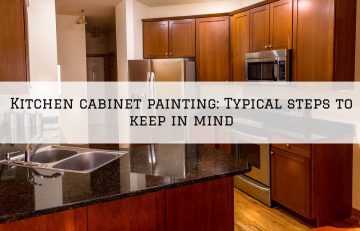Staining Veneer Furniture in Washington, MI? Here is How
Veneer is a very thin sheet of hardwood that has been derived from tree trunks.
With veneer, beautiful, exotic wood can be used in wood processing, even if it were otherwise not affordable or available.
Since veneer is real wood, it is stained in the same way as solid wood.
However, there are differences in working techniques that should be considered.
If you want to give it a try, here is how to go about it;
Choose the Stain
You have the choice between oil or water-based stains and gel stains.
Each type of stain has different qualities, which could make it ideal for one type of wood, but not another.
Wood from different tree species may have more oil than the other.
For example, teak and rosewood trees have more oil than oak or hickory trees.
A water-based stain will not work as well on oily wood as it does on less oily wood. This must be taken into account when selecting the stain.
The necessary steps for staining veneer are identical, but the times of operation tasks differ depending on the stain selected.
Check for Damages
Most of the time, a veneer that comes from sawmills does not need to be sanded. Veneer from the sawmill is 0.60 mm thick, so very thin, and vigorous sanding will do damage.
Sand
Sanding if necessary, but with great care. Start with 180 grit sandpaper and follow the direction of the wood grain.
Check your work regularly to avoid damaging the veneer.
Clean the veneer thoroughly.
Stir the stain vigorously before use and then every 30 minutes while working.
Use a test piece of the veneer to test whether the color is right.
Apply a wood care product to veneer made of soft or porous wood such as pine.
Let it soak in for 5 to 15 minutes and wipe it off with a clean rag.
Staining
Apply stain to the veneer using a brush with soft bristles or a foam brush, following the wood grain.
Let it settle for 3 minutes and wipe the stain with a clean cloth following the grain of the wood.
Let them dry for 8 to 10 hours. If the color is not deep enough, apply additional layers of paint just like the first layer until you get the appearance you want.
For Oil Stain
Apply oil stain using a brush with soft bristles in the direction of the grain of the wood. Wait for 5 to 15 minutes for the stain to soak into the veneer, then wipe away excess stain with a clean cloth in the direction of the grain of the wood.
If necessary, apply a second coat of stain after the first coat has worked for 4 to 6 hours.
Let them dry for 8 hours if you want to apply a sealer.
The Bottom Line
If your veneer furniture or kitchen cabinets are looking dated and dull, cleaning alone might not be enough to restore their lost glory.
In such a case, consider hiring a pro to refinish your cabinets.
If you need professional help repainting or staining your furniture, kitchen cabinets, or even the entire home interior, our team at Eason Painting would be more than happy to help.
We have years of experience offering residential painting services in Macomb Township, Washington Township, Ray Township, Rochester, Rochester Hills, Romeo, Armada, Troy, Shelby Township, Harrison Township, Chesterfield, and Clinton Township, MI.
Call us today on 586-465-5081 for a FREE painting estimate.
You may also like:
Interior Painting Richmond, MI: 6 Ways to Add Color into Your Home
5 Common Interior Painting Mistakes to Avoid In Clinton Township, MI
Interior Painting Clinton Township, MI: How to Evaluate a Painting Estimate




